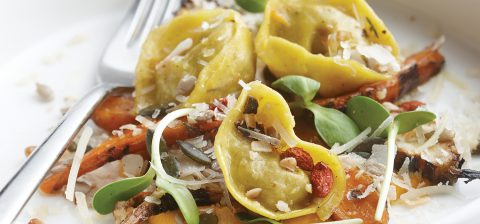Made in SA
Cool Cuisine
Many of this year’s most fashionable flavours are variations on themes that have always existed in South African food. This offers an ideal opportunity for all sorts of Mzanzi farmers, cooks and eaters to create unique and delicious home-grown interpretations of contemporary cuisine.
The other f-word – fermenting – is incredibly popular. Modish menus across the globe pay homage to the “special k” trinity of Chinese kombucha, Korean kimchi and Caucasoid kefir of fermented foods. Increasingly amasi (South African raw milk that undergoes lactic-acid fermentation) is being recognised as part of this culinary culture club.
Xhosa-style umphokoqo, a crumbly maize meal topped with rich, buttery amasi curds, is the Eastern Cape’s classic comfort food. Nelson Mandela loved it so much that he made his staff smuggle it into England for him, and it’s now making its mark as the hipster breakfast du jour.
At âpicure Restaurant in Johannesburg, exquisite umphokoqo with a generous mass of sweet-andsour curds is paired to perfection with a startlingly strong espresso.
Sweet-toothed types, meanwhile, adore the fermented dessert plate at Cape Town’s multiaward-winning Test Kitchen, which includes kombucha jellies, kefir custard and an amasi-fig ice cream.
Meat-free future
Globally: the vegolution is upon us. The number of people (and products) now completely meatfree has skyrocketed. Almost 7% of Britons, for example, describe themselves as vegan, and here too, those who follow an exclusively plant-based diet are currently considered the flavour of the month.
Indigenous ingredients are often associated with vegan chic. Never more so than at Johannesburg’s Qunu restaurant at the Saxon Hotel where the eggless baobab “mayonnaise” is worthy of sonnets. And who can say no to hot smoked apples with local olive oil and foraged buchu “butterscotch” at Franschhoek’s Foliage?
Not all hipsters have eschewed animal products. The term “nose to tail” is fashionable foodie-speak for a method of cooking and eating meat in which every possible part of an animal is consumed. It has become a buzzword for millennial diners worldwide who seek to minimise waste and maximise the sustainability of their food choices.
In Cape Town, La TÉte champions this hyper-hip, super-delicious lifestyle choice with dishes such as deep fried lamb tail with aioli sauce, and pork cheek with chicory and apples.
There has been much talk among the twitterati as to this Bree Street bistro being pioneering – which is odd, given that the vast majority of South Africans (black and white, rich and poor) eat offal.
When diners delight in the rich cardamom- and turmeric-spiced Cape Malay-style pens en pootjies, Afrikaner-style caul-wrapped kidney skilpadjies or the fall-off-the-bone-tender delights of inhloko (beef cheek) sold at Soweto’s Bara Taxi Rank, they might be surprised to discover they’re scoffing five-star fare.
Grainy reception
With what should a fashionable foodie soak up the nose-to-tail meaty sauces? Ancient grains are all the rage. Internationally, South American quinoa is the hot favourite, but in South Africa we favour the anti-oxidant-rich, glutenfree charms of our own indigenous ancient grain – sorghum (aka mabele). The “shake-shake” sorghum beer bread made by the Culinary Equipment Company, for example, is superb. At KwaZulu-Natal’s Enaleni Farm restaurant the fermented tamarillo and sorghum “risotto” is served with heritage Zulu lamb. Alternately head to Pretoria where “ting” (Setswana-style fermented sorghum) is sold in almost all spaza shops.
So what’s the next cool cuisine and how might South Africans make it our own? Bloomberg News recently reported that the international hot restaurant for cool people is Bangkok’s Insects in the Backyard where the menu includes water beetle ravioli. In Sïo Paulo, chef Alex Atala at D.O.M. has notched up two Michelin stars with his signature Amazonian leafcutter ant seasoning.
Ours is a culinary culture with a long history of insect eating. Might mopane worms be the taste of 2019?






 Sign-up and receive the Business Media MAGS newsletter OR SA Mining newsletter straight to your inbox.
Sign-up and receive the Business Media MAGS newsletter OR SA Mining newsletter straight to your inbox.